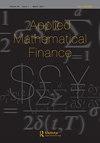对冲基金经理与投资者之间的最优互动
Q3 Mathematics
引用次数: 1
摘要
本研究从投资者的角度探讨对冲基金及其投资动机。我们建立了一个典型的对冲基金投资者和基金经理之间的契约模型,其中包括基金经理的特殊奖励方案,即部分所有权、激励和提前关闭条件。本文提出了一个由一种风险资产和一种无风险债券组成的对冲基金经理财富的连续随机控制问题,作为计算投资者财富的基础。然后推导了各介质的偏微分方程,并通过数值计算得到了这些问题的唯一粘度解。我们的模型表明,经理的激励非常高,因此与无风险投资相比,投资者没有获得利润。我们研究了一种新型的对冲基金合约,投资者可以选择在基金到期的一半时间内存入额外的资金。结果表明,投资者的资金流入与风险资产的预期回报率成比例增加,但即使在低回报率下,投资者也会流入资金以保持基金的开放。最后,通过比较有期权和没有期权的合约,我们发现投资者在没有期权流入资金的情况下有时会更好,从而造成期权的负值。本文章由计算机程序翻译,如有差异,请以英文原文为准。
The Optimal Interaction between a Hedge Fund Manager and Investor
ABSTRACT This study explores hedge funds from the perspective of investors and the motivation behind their investments. We model a typical hedge fund contract between an investor and a manager, which includes the manager’s special reward scheme, i.e., partial ownership, incentives and early closure conditions. We present a continuous stochastic control problem for the manager’s wealth on a hedge fund comprising one risky asset and one riskless bond as a basis to calculate the investors’ wealth. Then we derive partial differential equations (PDEs) for each agent and numerically obtain the unique viscosity solution for these problems. Our model shows that the manager’s incentives are very high and therefore investors are not receiving profit compared to a riskless investment. We investigate a new type of hedge fund contract where the investor has the option to deposit additional money to the fund at half maturity time. Results show that investors’ inflow increases proportionally with the expected rate of return of the risky asset, but even in low rates of return, investors inflow money to keep the fund open. Finally, comparing the contracts with and without the option, we spot that investors are sometimes better off without the option to inflow money, thus creating a negative value of the option.
求助全文
通过发布文献求助,成功后即可免费获取论文全文。
去求助
来源期刊

Applied Mathematical Finance
Economics, Econometrics and Finance-Finance
CiteScore
2.30
自引率
0.00%
发文量
6
期刊介绍:
The journal encourages the confident use of applied mathematics and mathematical modelling in finance. The journal publishes papers on the following: •modelling of financial and economic primitives (interest rates, asset prices etc); •modelling market behaviour; •modelling market imperfections; •pricing of financial derivative securities; •hedging strategies; •numerical methods; •financial engineering.
 求助内容:
求助内容: 应助结果提醒方式:
应助结果提醒方式:


